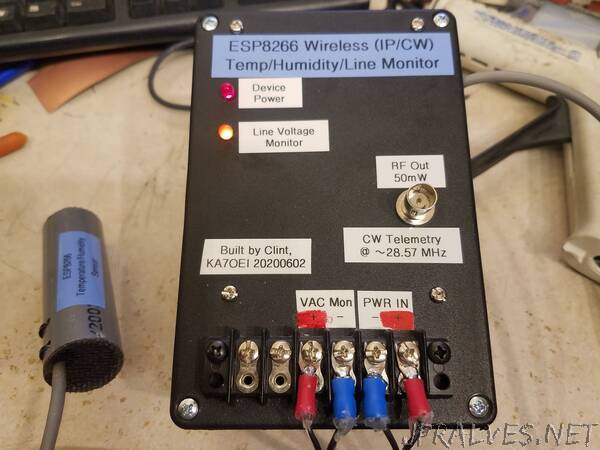
“As anyone who reads this blog probably knows, I have a bit to do with the operation and maintenance of the Northern Utah WebSDR - a remote receiver system that allows anyone with Internet access and a web browser to listen to the LF, MF, HF and some of the VHF bands as heard from a rural site in Northern Utah. The equipment for this receiver system is located a small building in the middle of mosquito and deer-fly infested range land near brackish marshes - no-where that anyone in their right mind would like to be during most of the year. With the normal weather in the summer and many clear days, this building gets hot at times: It’s been observed to exceed 130F (55C) on the hottest days inside - a temperature that causes the fans on the computers scream!
Even though electronic equipment is best kept at much lower temperatures, this isn’t practical in this building as it would be prohibitively expensive to run the on-site air conditioner full time - but all we really need to do is to keep the building closer to the outside temperature and even though it may be uncomfortable for humans, it is enough to keep the electronics happy. To that end, vents have recently been installed to allow convection to pull away most of the heat and the exterior will soon been painted with white “RV” paint to (hopefully) reduce the heating effects of direct sun.
It would make sense, then, that we had a way to remotely monitor the building’s internal temperature as a means of monitoring the situation. Additionally, temperature information can also be used to make minor adjustments to the frequencies of some of the receivers’ local oscillators to help counter thermal drift.
On site we do have an Ambient Weather (tm) station, but anyone who has used this (or similar) hardware knows that some vendors of this type of gear make it difficult to obtain your own data without jumping through hoops: Although this data is visually available on the local display or even on a web site, it is a bit awkward to pull this data from their system and (at least with the newer versions of the hardware) one cannot get this data locally from the weather station itself.
Fortunately, the most-needed data - temperature inside the building - is easily measured using inexpensive sensors, so it made sense to throw together a device that could make these measurements and present them in an easy-to-use web interface.”
